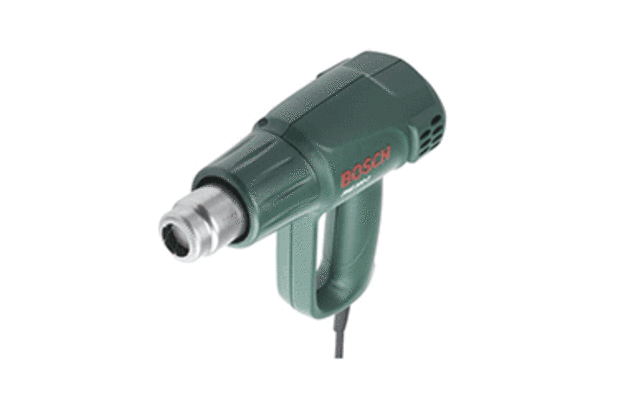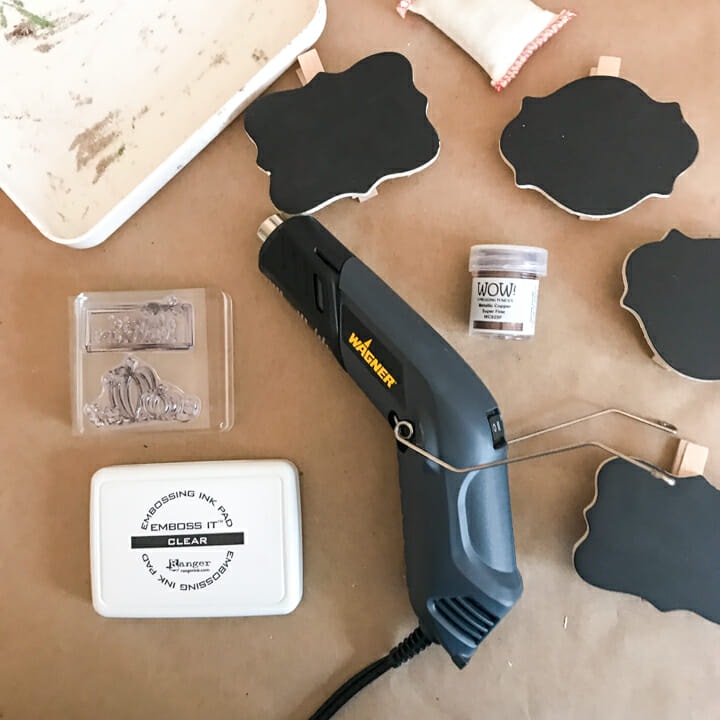
Welcome to the “Ultimate Heat Gun Guide” where we dive into the world of heat guns and unleash their amazing potential. If you’re ready to discover the power of these versatile tools, you’re in for a treat!
In this guide, we’ll explore everything you need to know about heat guns – from their basic functionalities to the endless possibilities they offer. So, buckle up and get ready to embark on an exciting journey that will ignite your curiosity!
Whether you’re a DIY enthusiast, a craft lover, or a professional tradesperson, a heat gun can be your secret weapon for tackling a wide range of projects. Let’s dive into the fantastic world of heat guns and explore how they can blaze trails in your work!
Blazing Trails: Your Ultimate Heat Gun Guide
Looking to discover the power of heat guns? Uncover the ultimate guide to blazing trails with heat guns. Explore the various applications, safety precautions, and tips and tricks to maximize your heat gun’s potential.
From removing paint to loosening bolts, this comprehensive guide will turn you into a heat gun pro. Get ready to conquer any DIY project with the right knowledge and techniques. Let’s unleash the heat gun magic!
What is a Heat Gun?
A heat gun is a versatile tool that produces a focused stream of hot air. It typically consists of a handle, a heating element, and a nozzle. Heat guns are designed to emit a controlled airflow at high temperatures, ranging from 100 to 1,200 degrees Fahrenheit. They are commonly used for paint removal, thawing frozen pipes, shrinking heat-shrink tubing, bending plastic, and various other tasks.
Heat guns come in different power levels, and the wattage determines the heat output. A higher wattage heat gun can produce more heat, making it suitable for heavy-duty applications. However, for delicate projects, a lower wattage heat gun is recommended to avoid damaging the materials.
When operating a heat gun, it’s essential to wear proper protective gear, such as safety glasses and heat-resistant gloves, to ensure your safety. Additionally, always read the manufacturer’s instructions and follow their guidelines for safe and effective use.
Choosing the Right Heat Gun
Selecting the right heat gun for your needs is crucial to achieve optimal results. Factors to consider include:
- Power output: Determine the wattage required for your projects. Higher wattage heat guns are suitable for heavy-duty tasks, while lower wattage ones are ideal for more delicate work.
- Temperature control: Look for heat guns with adjustable temperature settings to have better control over the heat output.
- Nozzle attachments: Different nozzle attachments provide versatility in terms of heat distribution and airflow concentration. Consider the specific applications you’ll be using the heat gun for and choose an appropriate attachment.
- Safety features: Ensure the heat gun has safety features, such as an auto-shutoff function and overheating protection, to prevent accidents and damage.
By carefully evaluating these factors, you can find the perfect heat gun that meets your requirements and enhances your DIY capabilities.
Applications of Heat Guns
Heat guns have a wide range of applications across various industries and DIY projects. Here are some of the common uses:
- Paint removal: Heat guns can efficiently soften and remove paint from surfaces, making it easier to scrape off or sand down.
- Thawing frozen pipes: By directing hot air onto frozen pipes, heat guns can speed up the thawing process and prevent potential damage.
- Shrinking heat-shrink tubing: Heat guns are ideal for shrinking heat-shrink tubing, providing a snug fit around wires and cables for electrical insulation.
- Bending plastic: With precise temperature control, heat guns can soften and bend plastic materials, allowing for customized shapes and designs.
- Embossing and crafting: Heat guns are commonly used in crafts, such as embossing on paper or creating textures on various materials.
These are just a few examples of what a heat gun can do. The versatility of this tool opens up endless possibilities for creative and practical applications.
Safe Heat Gun Practices
Working with heat guns requires caution and adherence to safety guidelines. Here are some essential safety practices:
- Keep a safe distance: Maintain a reasonable distance between the heat gun and your project to avoid scorching or burning the materials. Follow the manufacturer’s recommendations.
- Don’t point it at yourself or others: Always direct the heat gun away from yourself and others to prevent burns.
- Mind the surroundings: Ensure there are no flammable materials or liquids near your work area to avoid accidents or fires.
- Use heat-resistant surfaces: Place your project on a heat-resistant surface, such as a silicone mat or metal plate, to protect your work surface from damage.
- Allow cool-down time: After use, allow the heat gun to cool down completely before storing it to prevent accidental burns or fire hazards.
It’s essential to educate yourself on safe practices and take all necessary precautions when using a heat gun to ensure a safe and enjoyable experience.
Maintenance and Storage
To keep your heat gun in optimal condition and prolong its lifespan, follow these maintenance and storage tips:
- Clean the nozzle: Regularly remove any debris or residue from the nozzle to ensure proper airflow and prevent clogs.
- Store in a safe place: Keep your heat gun in a dry and secure location, away from moisture or extreme temperatures.
- Check power cord: Inspect the power cord for any signs of damage and replace it if necessary. Avoid bending or twisting the cord excessively.
- Follow manufacturer’s instructions: Always refer to the manufacturer’s guidelines for specific maintenance and storage instructions for your particular heat gun model.
Following these maintenance practices will help you maintain the performance and integrity of your heat gun throughout its lifetime.
With the information provided in this ultimate heat gun guide, you are now equipped with the knowledge to take on any DIY project with confidence.
From understanding the basics of heat guns to choosing the right one for your needs and practicing safe usage, you have all the tools you need to become a heat gun master. So, go ahead and start blazing trails with your newfound heat gun skills!
Frequently Asked Questions
Welcome to your ultimate guide to heat guns! Whether you’re a DIY enthusiast or a professional, this guide is here to answer all your burning questions about heat guns. From their uses to safety precautions, we’ve got you covered. Read on to find out more!
1. What are the common uses for a heat gun?
Heat guns are incredibly versatile tools that can be used for a variety of tasks. Some common uses include removing paint and varnish, bending plastic pipes, shrinking heat shrink tubing, soldering, thawing frozen pipes, and even crafting. With the right attachments and techniques, the possibilities are endless!
However, it’s important to note that heat guns produce high temperatures and should be used with caution. Always refer to the user manual and follow safety guidelines to avoid accidents and damage.
2. How do I choose the right heat gun for my needs?
When selecting a heat gun, consider the temperature range, airflow control, and additional features. The temperature range will determine the types of projects you can tackle. Airflow control allows you to adjust the intensity of the heat, which is particularly useful for delicate materials. Look for additional features like built-in stands, LCD displays, and ergonomic handles for added convenience.
It’s also essential to choose a heat gun from a reputable brand known for its quality and safety standards. Reading customer reviews and seeking recommendations can help you make an informed decision.
3. How do I safely use a heat gun?
Safety is paramount when using a heat gun. Start by wearing safety goggles and heat-resistant gloves for protection. Keep the heat gun at a safe distance from flammable materials and always aim it away from yourself and others. If working on a project that requires airflow control, adjust it to a low setting initially and gradually increase as needed.
Additionally, be cautious when handling hot surfaces and allow them to cool before touching. After using the heat gun, unplug it and let it cool down completely before storing it. Remember to always refer to the user manual for specific safety instructions provided by the manufacturer.
4. Can I use a heat gun to remove paint from any surface?
While heat guns are commonly used to remove paint, not all surfaces are suitable for this method. Heat guns generate high temperatures that can damage sensitive materials like plastic or delicate wood.
It’s best to test a small, inconspicuous area before proceeding with paint removal.
When using a heat gun to remove paint, keep the nozzle moving and maintain a consistent distance from the surface. This prevents excessive heat buildup in one spot, minimizing the risk of scorching or damaging the surface. Always exercise caution and take necessary safety measures.
5. Are there any heat gun alternatives for specific tasks?
While heat guns are versatile tools, there are alternatives for specific tasks. For example, a hairdryer can be used as a substitute for heat guns in some instances. However, hairdryers typically don’t reach temperatures as high as heat guns and may not deliver the same level of precision and control. It’s important to consider the specific requirements of your project and choose the appropriate tool accordingly.
Other alternatives for certain tasks include chemical paint strippers or manual scraping for paint removal. However, keep in mind that each alternative has its own advantages and limitations, so it’s crucial to assess your needs and choose the method that works best for you.
So, let’s wrap it up! Heat guns are super handy tools that can do a lot. They can help to remove paint, bend plastic, and even thaw frozen pipes.
Make sure to choose a heat gun with adjustable temperature settings and safety features. Always follow the instructions and use protective gear to keep yourself safe. Now go out there and get creative with your heat gun!
In conclusion, a heat gun is like a magic wand for fixing, creating, and exploring. Whether you’re a DIY enthusiast or just need a quick fix, a heat gun can be your trusty sidekick.
With its versatility and power, it’s no wonder why heat guns are so popular. So go ahead and give it a try, and let your creativity and problem-solving skills blaze new trails!



